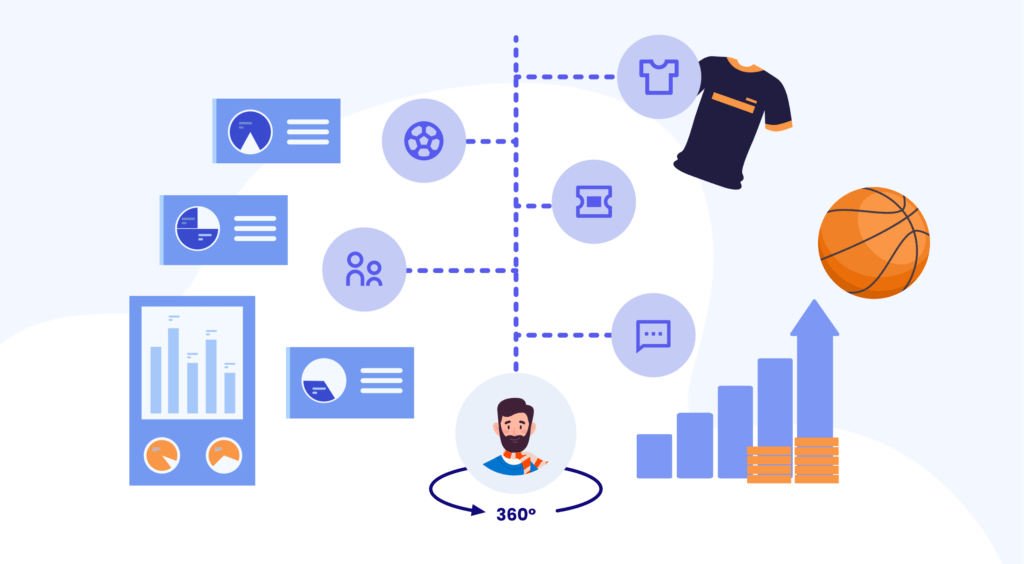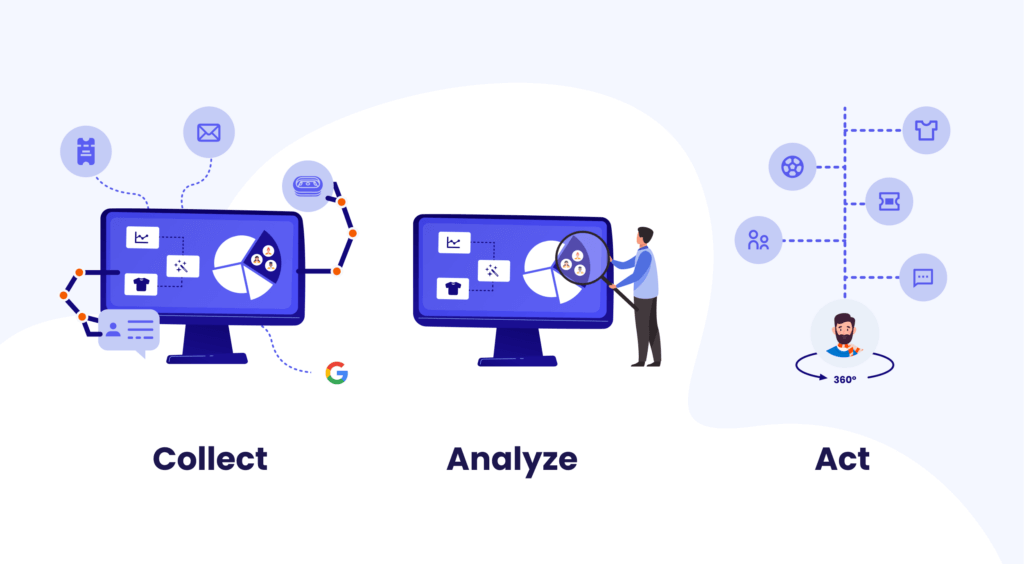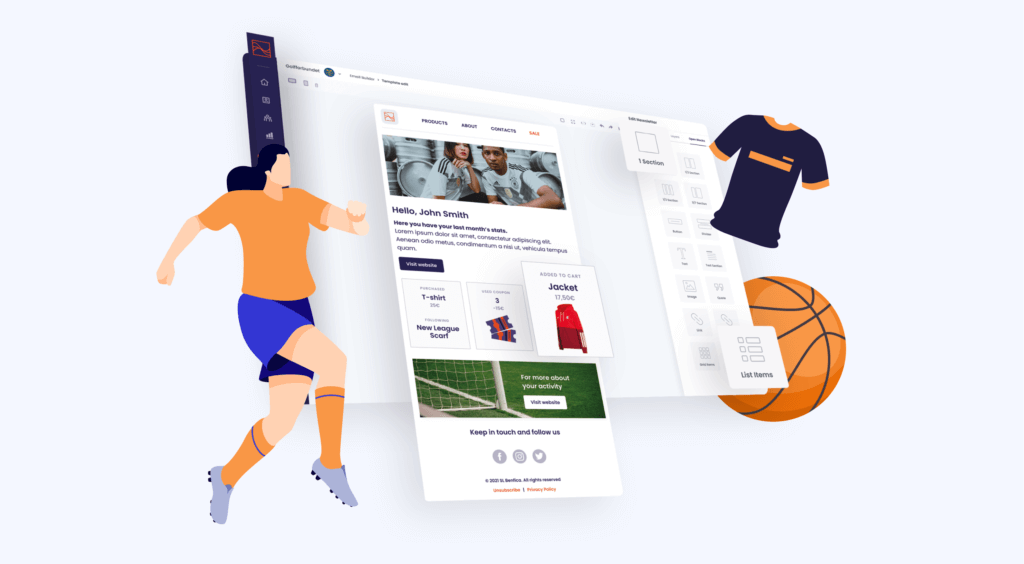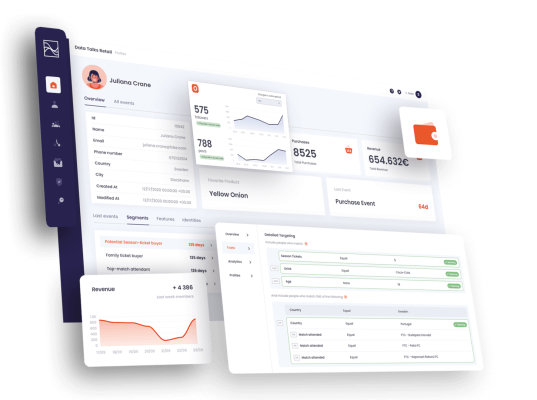
A 360-degree approach – have you stumbled upon this concept before? If you have, then you should keep on reading. If you haven’t, then you should definitely keep on reading. Why? Because, in today’s digital day and age, having a 360-degree approach to your sports marketing strategy and overall business strategy is a prerequisite if you want to create a strategy that is both future-proof and sustainable.
So in this blog post, we will be covering:

What a 360-degree approach is

Why adopting this approach is crucial to future-proof your sports organization

How you can adopt this approach in 4 steps using a Sports CDP
Let’s jump right in shall we!
Before we dive right in...
Subscribe to our blog today to ensure that you never miss valuable posts such as this one. We are passionate about helping sports organizations deliver a world-class fan experience, because better fan experience means better business. So why not use this opportunity to the fullest?

What is a 360-degree approach to sports marketing?

Let’s start off by defining what we mean by a 360-degree approach. A 360-degree approach means that you are able to
- Collect all of your data and unify it one place
- Analyze it and gain deep insights from it
- Act on these insights
In other words, this also meas that to have a 360-degree approach you need a 360-degree view.
If you’re working with marketing, for instance, you want to have a 360-degree view of each supporter. And this means you will need to unify all the data you have about each supporter to understand their specific characteristics, preferences, and behaviors.
Thanks to these insights that you have gained from your data about your supporters, you will now be able to act on them. For instance, you could target your supporters in their preferred channel, online as well as offline, such as:
- In stadium
- Website
- Online merchandise store
- OTT-platform
- SMS
- App
- Social media platforms
- Membership platform
- Via your sponsors
…and the list goes on.
However, reaching your supporters on their preferred channel is only half the story. Because, in addition, these interactions and experiences in which you target your supporters also need to be:
- Personalized
- Seamless
- Consistent
…across all channels and touchpoints. This type of marketing is usually also known as an omnichannel marketing approach.

Find out more about omnichannel sports marketing
and get answers to questions like, what an omnichannel approach is., why adopting an omnichannel approach is crucial for sports organizations, and how sports organizations can create a successful omnichannel strategy by reading our Omnichannel Guide. The more you read the more confident you will become about heading down this path.
Long story short, adopting a 360-degree approach in the context of marketing means that you reach and interact with your supporters with:
- the right message
- in the right channel
- at the right time
However, a 360-degree approach to your sports marketing is only possible if you actually apply the same approach to your overall business strategy. In fact, having a 360-degree approach to everything you do at your sports organization should be a prerequisite in order to implement a successful 360-degree sports marketing approach.
Here is why:
Adopting a 360-degree approach is a prerequisite to future-proofing your sports organization

Sports organizations that not only want to thrive but even just stay afloat in the future need to work data-driven in everything they do. Moreover, a 360-degree approach means that you have a holistic view of everything in your sports organization. But to achieve this, you need data to measure and optimize the overall performance of your sports organization. So working data-driven enables you to realize this.
Working data-driven is key to:
- Analyze and optimize your current revenue streams
- Find new viable business opportunities
- Better serve your supporters wherever they are and whenever they want
- Grow all of your sales, such as:
- Ticket sales
- Merchandise sales
- In-stadium food and beverage sales
- Membership and OTT-Streaming Service subscriptions
- Improve your overall organizational operations and team performance
However, there are several challenges that sports organizations might face in their pursuit to work data-driven and adopt a 360-degree approach.
The 3 main challenges to adopting a 360-degree approach

This list could, of course, be longer. But when it comes to adopting a 360-degree approach, the list can be consolidated into the following three challenges below. So, let’s take a look at each one of them.
Data spread out across different sources
In order to leverage data, you first need to have access to this data. However, this is one of the greatest challenges because, just like so many other sports organizations out there, you most likely have your data spread out across different sources and systems, such as:
- Ticketing system
- Point of Sale (POS) system for in-stadium food and beverage purchases
- Online POS or e-commerce system for your merchandise
- Social media platforms
- App
- OTT streaming service platform
- Newsletter and mailing lists
- Event sign-up lists
When you have your data stored in silos and not accessible to you in one single place (aka a single source of truth), you risk missing important information about your supporters. So, this means that you cannot get a holistic view of your data and, in turn, your overall sports organization. In addition, siloed data tends to suffer quality issues. This is due to inconsistencies in overlapping data.
Different types of data

Since your sports organization has data stored in multiple sources and systems, you most like also to have a lot of data in multiple different formats. Consequently, it will be extremely difficult to wrangle your data and transform it into insights.
According to Deloitte Digital, the average business has 17 unique technology applications housing customer data.
And speaking of different types of data, sports organizations should make having a first-party data strategy a top priority. Why? Because of the doom of third-party cookies. In a nutshell, third-party cookies are cookies owned by a third party. You can then acquire this data from a third-party provider. However, these cookies will soon be removed by major providers such as Google, Mozilla, and Apple.
This means that you basically cannot rely on third-party data anymore to understand your supporters’ specific characteristics, preferences, and behaviors. Instead, you need to rely on data that you have collected about your supporters, also known as first-party data. That is, data that your supporters have given consent to share with you.
This brings us to the third challenge…
Privacy regulations

Since you now rely on your own first-party data, this also means that your supporters need to opt-in and consent before you can use their data. Yes, this means that your sports organization needs to address and follow the privacy requirements designed for your supporters and users in general, such as GDPR and the California Consumer Privacy Act (CCPA).
To achieve this, it is critical that you both have a consent management strategy as well as robust data security management capabilities.
However, it’s not all dull and gloomy…
The solution: a Sports Customer Data Platform

With a Sports Customer Data Platform, you are able to collect and centralize all your data. A CDP is built to handle any type and category of data. It can connect all sources of data, whether it is:
- internal or external
- structured or unstructured
- batched or streaming
And the list goes on. You can rest assured knowing that you can collect and store it in your CDP.
Here are just some of the types of data you can collect:
- Ticket purchases
- In-stadium purchases
- Stadium entrance data
- Merchandise purchases
- Demographic data
- Personal data
- Web behavior
- Mobile app behavior
Some of the amazing things you can achieve when you use a Sports Customer Data Platform and adopt a 360-degree approach are:
Optimizing your current revenue streams, which could include:
- Increasing your ticket sales
- Boosting your sponsorship and partnership value
- Sell much more merchandise
- Upgrade supporters to a higher spending level
- In-stadium purchases, such as food and beverages
- Overall supporter engagement and loyalty
Increases supporter engagement and loyalty
Since you will now be able to deliver experiences that are personalized, seamless, and consistent across all channels and touchpoints.
Improved decision-making
Since you are now relying on data insights and patterns to understand your supporters, you can rest assured that your decisions will be much more accurate, saving you time and money.
Build a data-driven culture
By using a Sports CDP, you are removing the data siloes that were once there and making all your data available to anyone at your sports organization that needs it. By making your data available (known as data democratization), you are taking one step closer to creating a data-driven culture – a necessity for any sports organization that wants to be ahead of the game.
Create a future-proof and sustainable sports business strategy
By adopting a data-driven approach and gaining a 360-degree view of your sports organization, enabled by implementing and leveraging a Sports CDP, you can rest assured that your sports business strategy will both be future-proof as well as sustainable.
How sports organizations can create a successful 360-degree approach [using a Sports CDP]

Alright! So we have learned what a 360-degree approach is and why a Sports CDP is your best choice to implement this approach. Now, it is time to look at how you can create a successful 360-degree approach using a Sports CDP.
Specifically, we can this approach in 4 steps:

Collect and unify all your data in one place
The sports CDP will allow you to centralize data from different sources (website, email, social media, apps, merchandise, ticket purchase, stadium entrance, etc.) and connect them to your supporters – creating a single view of each supporter.

Gain insights from your data
The Sports CDP then enables you to segment your data to uncover relevant insights which you in turn can act on. Insights without action mean no added business value, so your data also needs to be available to other tools and systems that you can leverage to engage and convert your supporters.

Act on your data
to analyze insights easier and let you make faster and more accurate decisions.

Look at results and optimize
Since you now have the right data in place, you can make decisions that are based on real insights about your supporters. This will allow you to create different initiatives that are actually relevant to your supporters and thus improve the relationship between your supporters and your sports organization, which is the key to increasing profit in the long run. And in addition to acting on insights about your supporters, you can also act on other insights from your data that will help you to improve and even optimize everything you do in all your other organizational departments.
Conclusion
Bringing it all together, adopting a 360-degree approach to your sports marketing strategy and overall sports business strategy is key for any sports organization that not only wants to stay on top of their game but even just stay in the game. But to do so, they must first ensure that they are prepared and have the ability to work data-driven – with the first and most important step simply being: awareness. Once you are aware, you are able to take the necessary steps to adopt a 360-degree approach and a Sports CDP is the solution that will get you there.
The next step is, then, to see how this would actually look in action. So to help you out, we have created a demo to guide you through it all: the Sports CDP demo. And the best part? It is free!




